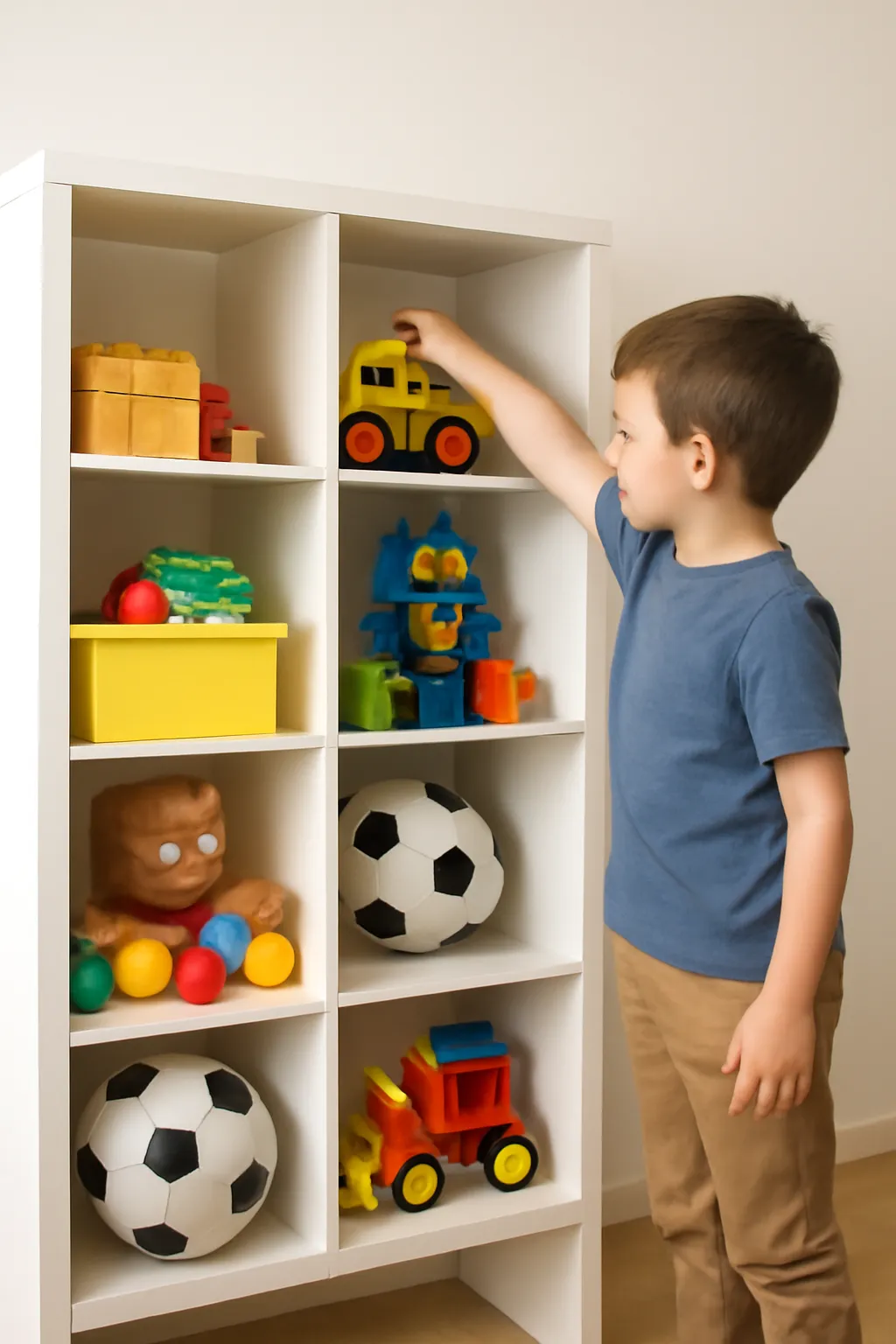Looking for ideas on organizing your child’s toys? Explore the best toy storage solutions, essential toys for elementary school kids, and how to keep everything neat and accessible.
The Perfect Toy Cabinet for an Organized Space
As parents of elementary school students, one of the biggest challenges is keeping their toys organized in a way that’s both functional and appealing. Toy cabinets are a lifesaver in this situation. A good toy cabinet doesn’t just store toys; it helps teach kids the importance of organization and responsibility. So, what makes the perfect toy cabinet for an elementary school student’s room?
1. Practicality and Size:
The key to choosing a good toy cabinet lies in its size and functionality. A cabinet that’s too big may take up too much space, while one that’s too small won’t offer enough room for toys. Look for a cabinet that fits into the available space but also provides enough compartments to separate different toys. For younger kids, a unit with open shelves or bins might be best as it encourages independent play and cleanup. Older children, on the other hand, may benefit from a more structured storage unit with drawers or labeled boxes.
2. Durable and Safe Materials:
When it comes to toys, the materials used in furniture should be durable and child-safe. Look for cabinets made of high-quality wood or plastic, ensuring they can withstand the wear and tear of everyday use. Materials like non-toxic paints and rounded edges are also a must for safety. Keep in mind that the toy cabinet should be sturdy enough to handle both heavy toys and the occasional bump or knock.
3. Accessibility:
One of the key aspects of a good toy cabinet is accessibility. Kids should be able to easily reach and put away their toys without assistance. Ensure the cabinet has adjustable shelves or bins that can be rearranged as the child’s collection grows. This way, the toy cabinet evolves with the child’s needs, and they will have fun tidying up their space.
👉 Explore more about toy cabinets 👈
Essential Toys for Elementary School Kids
When it comes to toys for elementary school children, the options are vast. However, not all toys are created equal, and some are more beneficial than others for their cognitive and physical development. Let’s break down the types of toys that elementary school students can benefit from the most.
1. Educational Toys:
At this age, children are developing critical thinking and problem-solving skills. Educational toys that challenge the mind, like puzzles, building sets (such as LEGO), and STEM kits, are excellent choices. These toys can help improve logic, spatial awareness, and creativity. Games that involve strategy and teamwork, such as board games or interactive learning apps, are also great at fostering collaboration and critical thinking.
2. Sports and Physical Activity Toys:
Active play is essential for elementary school students, as it supports physical health and motor skill development. Soccer balls, basketballs, jump ropes, and hula hoops can be used both indoors and outdoors. Physical activity not only improves fitness but also teaches children the importance of teamwork, perseverance, and discipline.
3. Artistic and Creative Toys:
Art and creativity are critical at this age, and many children express themselves through drawing, painting, or crafting. Art supplies like crayons, markers, clay, and colored paper encourage creative expression and can be stored in a toy cabinet for easy access. Additionally, toys like musical instruments (xylophones, drums, etc.) help develop coordination and rhythmic skills.
👉 Find out more about essential toys for kids 👈
The Role of the “Elementary School Student Toy Man”
When it comes to managing toy storage and organization, an often-overlooked role is that of the “Elementary School Student Toy Man.” This is not a title you would typically find on a resume, but it’s an important concept in the world of child development and organization. The “Toy Man” is the parent, teacher, or caregiver responsible for helping kids understand the importance of toy management and ensuring their toys are kept in order.
1. Leading by Example:
The role of the “Toy Man” involves leading by example. When parents demonstrate good organization skills—whether it’s in their own spaces or in managing the child’s toys—the child will likely mirror those behaviors. It’s important for children to see their caregivers engage in organizing activities like sorting toys, cleaning up messes, and maintaining a tidy space. By doing this, they will learn valuable life skills related to order and responsibility.
2. Encouraging Participation:
While it’s easy for a parent to just tidy up the toys for their child, involving the child in the process can teach them vital skills. The “Toy Man” helps make organizing a fun activity, using songs or games to encourage children to pick up after themselves. Acknowledge their efforts, and make sure they know that cleaning up their toys is part of their daily routine.
3. Offering Structure and Rewards:
One way the “Toy Man” can effectively help is by setting up a structure for when and how toys should be put away. This could be a set time every day for cleanup or a system of rewarding kids for maintaining a neat space. A reward system, like a star chart or a small treat, can motivate children to develop good habits early on.
👉 Learn more about toy organization strategies 👈
Conclusion
Keeping an elementary school student’s toys organized doesn’t have to be a daunting task. With the right toy cabinet, a selection of essential educational and creative toys, and the helpful guidance of the “Toy Man,” your child can develop important organizational skills while enjoying their playtime. The key is to provide a structured, accessible environment where toys are easy to find and clean up after. Remember, an organized space isn’t just for appearances—it can foster independence, creativity, and responsibility in your child.
As Marie Kondo once said, “The objective of cleaning is not just to clean, but to feel happiness living within that environment.” And with the right approach, your child’s toy storage can be an enjoyable and enriching experience.






